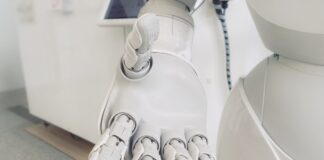Computer Vision, a subfield of Artificial Intelligence, has revolutionized the way machines interact with the physical world by enabling them to interpret and understand visual information from images and videos. This has led to a wide range of applications across various industries, from healthcare to finance, security to entertainment. Computer Vision, in essence, is the ability of machines to perceive and understand visual data, allowing them to make decisions and take actions accordingly. For instance, self-driving cars use Computer Vision to detect pedestrians, lanes, and traffic signals to navigate through roads safely. Similarly, facial recognition systems rely on Computer Vision to identify individuals and verify their identities.
Computer Vision has made tremendous progress in recent years, thanks to advances in deep learning and large-scale datasets. It has enabled machines to learn from vast amounts of visual data and improve their accuracy in recognizing patterns, detecting objects, and understanding context. The applications of Computer Vision are vast and varied, including object detection, image segmentation, facial recognition, facial emotion recognition, optical character recognition (OCR), medical imaging analysis, and autonomous vehicles. For instance, computer vision systems can analyze medical images to detect tumors or diagnose diseases, while self-driving cars use Computer Vision to detect obstacles on the road.
One of the most significant advancements in Computer Vision is the development of convolutional neural networks (CNNs), which are designed specifically for image and video processing tasks. CNNs consist of multiple layers that process input data in a hierarchical manner, allowing them to extract features at different scales and resolutions. This hierarchical approach enables CNNs to recognize patterns at various levels of abstraction, from simple features like edges and lines to complex patterns like objects and scenes. Furthermore, CNNs can be trained on large datasets using backpropagation algorithms, which allows them to learn from mistakes and improve their performance over time.
Computer Vision has also seen significant advancements in object detection and tracking. Object detection involves locating specific objects within an image or video stream, while object tracking involves following the movement of these objects over time. Object detection algorithms typically involve a combination of classification and localization techniques, where the algorithm classifies the object as a specific category (e.g., person or car) and then localizes its position within the image or video frame. Object tracking algorithms use this information to track the movement of the object over time, allowing them to predict its future trajectory.
Another area where Computer Vision has made significant progress is in image segmentation. Image segmentation involves dividing an image into its constituent parts or objects based on certain criteria such as color, texture, or shape. This is a crucial step in many Computer Vision applications, as it enables machines to focus on specific regions of interest within an image or video stream. Image segmentation algorithms can be classified into two main categories: edge-based methods that detect boundaries between objects or regions and region-based methods that segment images based on pixel values or texture features.
Facial recognition is another area where Computer Vision has seen significant advancements. Facial recognition involves identifying individuals based on their facial features, which are unique to each person. This technology has been used extensively in various applications such as security surveillance, border control, and identity verification. Facial recognition algorithms typically involve a combination of feature extraction techniques such as scale-invariant feature transform (SIFT) and Gabor filters to extract facial features from images or videos.
Computer Vision has also been applied to medical imaging analysis with great success. Medical imaging modalities such as X-rays, CT scans, and MRI scans provide detailed information about internal organs and tissues. Computer Vision algorithms can be used to analyze these images to detect abnormalities such as tumors or fractures. For instance, convolutional neural networks (CNNs) have been trained on large datasets of medical images to detect breast cancer from mammograms.
Autonomous vehicles rely heavily on Computer Vision to navigate through roads safely. They use a combination of sensors such as cameras, lidar sensors, and radar sensors to perceive their surroundings. Computer Vision algorithms process the visual data from these sensors to detect obstacles such as pedestrians or other vehicles and make decisions about steering and braking.
Furthermore, Computer Vision has also been applied to robotics and drone navigation. Robots and drones equipped with cameras and other sensors can use Computer Vision algorithms to navigate through environments and avoid obstacles. For instance, a robot may use Computer Vision to detect and avoid pedestrians or other robots while navigating through a warehouse.
Computer Vision has also been used in the field of e-commerce. Online retailers use Computer Vision to analyze product images and extract relevant information such as product dimensions, color, and shape. This information is then used to provide accurate product descriptions and recommendations to customers.
In addition, Computer Vision has been applied to the field of security. Surveillance cameras use Computer Vision algorithms to detect and track individuals or vehicles in real-time. This information can be used to prevent crimes such as shoplifting or theft.
Computer Vision has also been used in the field of education. Educational institutions use Computer Vision to analyze student behavior and engagement in the classroom. This information can be used to identify areas where students may need additional support or resources.
Another area where Computer Vision has made significant progress is in the field of entertainment. Video games use Computer Vision algorithms to analyze player behavior and adjust game difficulty accordingly. Movie studios use Computer Vision to analyze audience behavior and predict box office performance.
Computer Vision has also been used in the field of healthcare. Doctors use Computer Vision algorithms to analyze medical images such as X-rays and MRI scans to diagnose diseases such as cancer or Alzheimer’s. Patients wearables use Computer Vision algorithms to track vital signs such as heart rate and blood pressure.
In addition, Computer Vision has been applied to the field of environmental monitoring. Environmental monitoring systems use Computer Vision algorithms to analyze satellite imagery and detect changes in weather patterns, deforestation, or pollution.
The applications of Computer Vision are vast and varied, and it is expected that they will continue to grow as the technology advances. With the increasing availability of high-performance computing hardware and large-scale datasets, researchers are able to train more complex models that can perform tasks that were previously impossible.
One of the most promising areas of research in Computer Vision is in the field of Explainable AI (XAI). XAI aims to provide transparent and interpretable explanations for machine learning models, which is crucial for high-stakes applications such as healthcare or finance.
Another area of research is in the field of multimodal processing, which involves combining multiple sources of data such as text, image, and audio to improve the accuracy of machine learning models. This has applications in areas such as chatbots, virtual assistants, and natural language processing.
In conclusion, Computer Vision has revolutionized the way machines interact with the physical world by enabling them to interpret and understand visual information from images and videos. Its applications are vast and varied, ranging from object detection and tracking to facial recognition and medical imaging analysis. As Computer Vision continues to advance with improvements in deep learning algorithms and large-scale datasets, we can expect even more sophisticated applications that enable machines to interact with humans in a more natural and intuitive way.
Computer Vision has come a long way since its inception, and its applications have expanded into various fields including healthcare, finance, entertainment, education, security, environmental monitoring, and many more. As researchers continue to develop new algorithms and techniques, we can expect even more innovative applications that will transform the way we live, work, and interact with each other.














